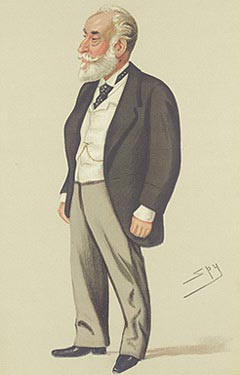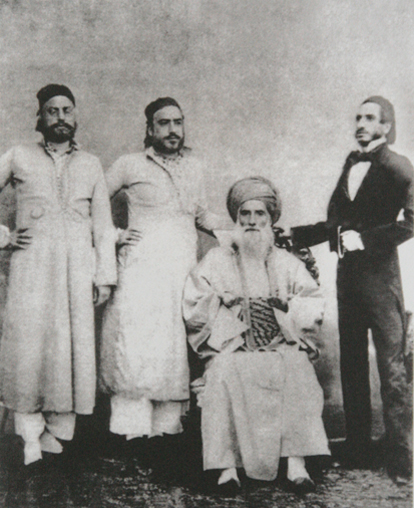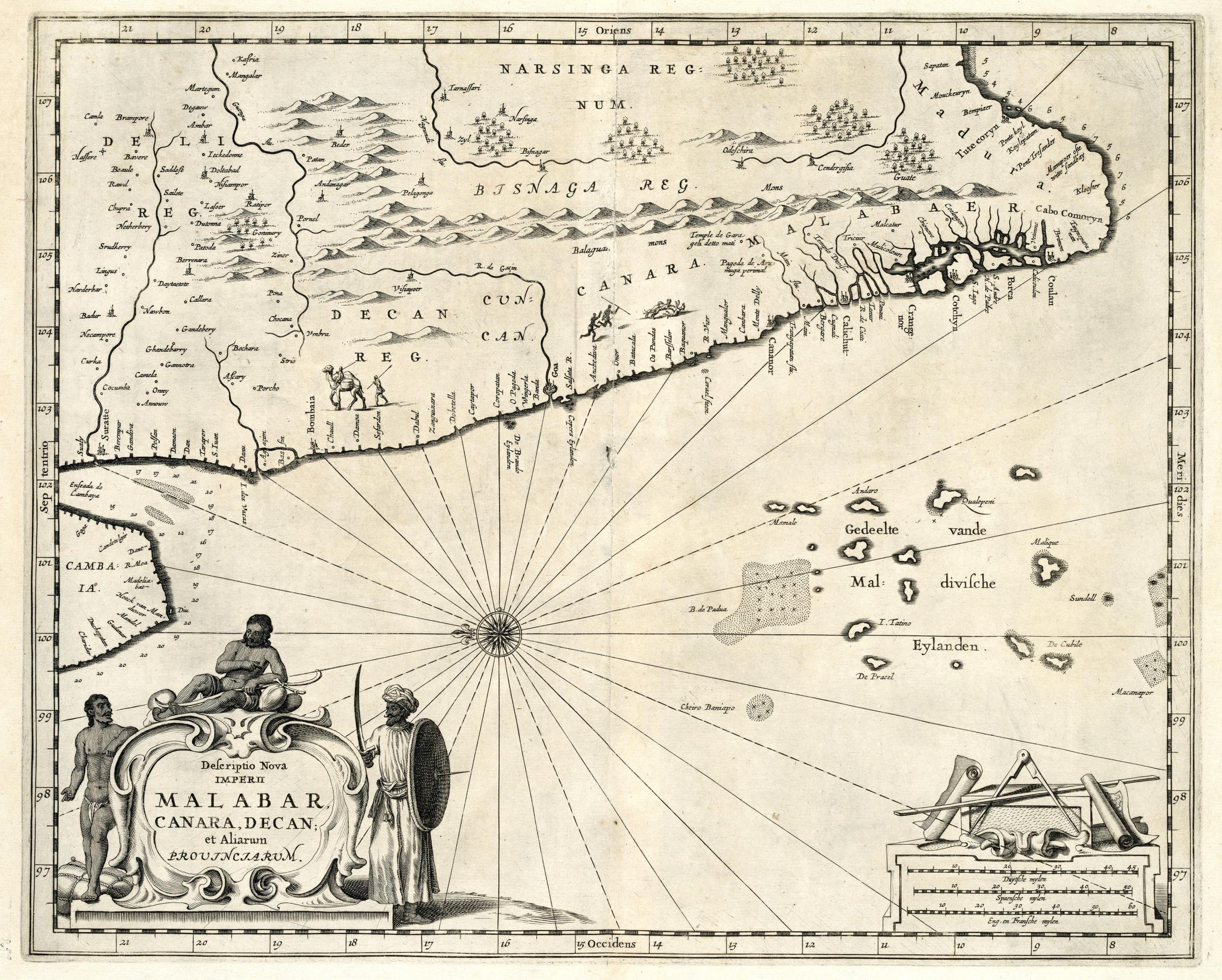|
Sassoon Docks
Sassoon Docks, built in 1875, is one of the oldest docks in Mumbai and was the first wet dock constructed in Bombay. It is one of the few docks in the city open to the public. It is situated in Mumbai harbor in South Mumbai area of Colaba. It is one of largest fish markets in the Mumbai city. Its neighboring features are Mumbai Port Trust Garden (Sagar Upvan Colaba) and Offices of Fisheries Department, and it overlooks Oyster Rock, an island in the Mumbai harbour, at a distance. History Built in 1875 on reclaimed land, it was owned by the mercantile company David Sassoon & Co. The company was headed by Albert Abdullah David Sassoon (1818–1896), son of David Sassoon, a Baghdadi Jew and the leader of the Jewish community in Bombay. The Sassoon Docks were the first commercial wet dock in western India and helped establish the cotton trade. In 1879, Sassoon Docks and other associated foreshore properties were purchased by the government on behalf of Bombay Port Trust. ... [...More Info...] [...Related Items...] OR: [Wikipedia] [Google] [Baidu] |
Mumbai
Mumbai (, ; also known as Bombay — the official name until 1995) is the capital city of the Indian state of Maharashtra and the ''de facto'' financial centre of India. According to the United Nations, as of 2018, Mumbai is the second-most populous city in India after Delhi and the eighth-most populous city in the world with a population of roughly 20 million (2 crore). As per the Indian government population census of 2011, Mumbai was the most populous city in India with an estimated city proper population of 12.5 million (1.25 crore) living under the Brihanmumbai Municipal Corporation. Mumbai is the centre of the Mumbai Metropolitan Region, the sixth most populous metropolitan area in the world with a population of over 23 million (2.3 crore). Mumbai lies on the Konkan coast on the west coast of India and has a deep natural harbour. In 2008, Mumbai was named an alpha world city. It has the highest number of millionaires and billionaires among all cities i ... [...More Info...] [...Related Items...] OR: [Wikipedia] [Google] [Baidu] |
David Sassoon & Co
David Sassoon & Co., Ltd. (in the early years called ″David Sassoon & Sons″) was a trading company operating in the 19th century and early 20th century predominantly in India, China and Japan. History Established 1832 in Bombay (today Mumbai) by David Sassoon (1792–1864), a Baghdadi Jewish businessman in Bombay. The company was set up in a small counting house at 9 Tamarind Street (does not exist any longer) initially involved in banking activities and property investments. But it soon started to deal successfully in all sorts of commodities like precious metals, silks, gums, spices, wool and wheat. But by that time it specialised in trading Indian cotton yarn and opium from Bombay to China. The latter was promoted by the First Opium War and the Treaty of Nanking in 1842 between the United Kingdom and the Chinese Qing dynasty.Jonathan Goldstein (Editor): "The Jews of China", Volume One, M.E. Sharpe Publisher, Armonk/ London 1999, p.145, For the fast transport of the o ... [...More Info...] [...Related Items...] OR: [Wikipedia] [Google] [Baidu] |
David Sassoon Library
The David Sassoon Library and Reading Room is a famous library and heritage structure in Mumbai, India. The idea for a library to be situated in the center of the city came from Albert Abdullah David Sassoon, Albert Sassoon, son of the famous Baghdadi Jewish philanthropist, David Sassoon (treasurer), David Sassoon. The building was designed by architects J. Campbell (architect), J. Campbell and G. E. Gosling, for the Scott McClelland and Company, at a cost of Rs. 125,000. David Sassoon donated Rs. 60,000, while the rest of the cost was borne by the Government of Bombay Presidency. The library is located on Rampart Row, looking across the Kala Ghoda. The building, completed in 1870, is built using yellow Malad stone, much like the abutting Elphinstone College, Army and Navy Buildings and Watson's Hotel. Above the entrance portico is a white stone bust of David Sassoon. This marble bust was Thomas Woolner's working model for the statue of Sassoon standing at the front of the stair ... [...More Info...] [...Related Items...] OR: [Wikipedia] [Google] [Baidu] |
Hindustan Times
''Hindustan Times'' is an Indian English-language daily newspaper based in Delhi. It is the flagship publication of HT Media, an entity controlled by the KK Birla family, and is owned by Shobhana Bhartia. It was founded by Sunder Singh Lyallpuri, founder-father of the Akali movement and the Shiromani Akali Dal, in Delhi and played integral roles in the Indian independence movement as a nationalist daily. ''Hindustan Times'' is one of the largest newspapers in India by circulation. According to the Audit Bureau of Circulations, it has a circulation of 993,645 copies as of November 2017. The Indian Readership Survey 2014 revealed that ''HT'' is the second-most widely read English newspaper in India after ''The Times of India''. It is popular in North India, with simultaneous editions from New Delhi, Mumbai, Lucknow, Patna, Ranchi and Chandigarh. The print location of Nagpur was discontinued from September 1997, and that of Jaipur from June 2006. ''HT'' launched a youth daily ... [...More Info...] [...Related Items...] OR: [Wikipedia] [Google] [Baidu] |
Bombay Presidency
The Bombay Presidency or Bombay Province, also called Bombay and Sind (1843–1936), was an administrative subdivision (province) of British India, with its capital in the city that came up over the seven islands of Bombay. The first mainland territory was acquired in the Konkan region with the Treaty of Bassein (1802). Mahabaleswar was the summer capital. The Bombay province has its beginnings in the city of Bombay that was leased in fee tail to the East India Company, via the Royal Charter of 27 March 1668 by King Charles II of England, who had in turn acquired Bombay on 11 May 1661, through the royal dowry of Catherine Braganza by way of his marriage treaty with the Portuguese princess, daughter of John IV of Portugal. The English East India Company transferred its Western India headquarters from Surat in the Gulf of Cambay after it was sacked, to the relatively safe Bombay Harbour in 1687. The province was brought under Direct rule along with other parts of British I ... [...More Info...] [...Related Items...] OR: [Wikipedia] [Google] [Baidu] |
Western India
Western India is a loosely defined region of India consisting of its western part. The Ministry of Home Affairs in its Western Zonal Council Administrative division includes the states of Goa, Gujarat, and Maharashtra along with the Union territory of Dadra and Nagar Haveli and Daman and Diu, while the Ministry of Culture and some historians also include the state of Rajasthan. The Geological Survey of India includes Maharashtra but excludes Rajasthan whereas Ministry of Minority Affairs includes Karnataka but excludes Rajasthan. Madhya Pradesh is also often included and Haryana, western Uttar Pradesh and southern Punjab are sometimes included. Western India may also refer to the western half of India, i.e. all the states west of Delhi and Chennai, thus also including Punjab, Kerala and surrounding states. The region is highly industrialised, with a large urban population. Roughly, western India is bounded by the Thar Desert in the north, the Vindhya Range in the east and no ... [...More Info...] [...Related Items...] OR: [Wikipedia] [Google] [Baidu] |
History Of The Jews In India
The history of the Jews in India dates back to antiquity.''The Jews of India: A Story of Three Communities'' by Orpa Slapak. The Israel Museum, Jerusalem. 2003. p. 27. .Weil, Shalva. ''India's Jewish Heritage: Ritual, Art, and Life-Cycle''. Mumbai: Marg Publications 2009. was one of the first foreign religions to arrive in |
Baghdadi Jew
The former communities of Jewish migrants and their descendants from Baghdad and elsewhere in the Middle East are traditionally called Baghdadi Jews or Iraqi Jews. They settled primarily in the ports and along the trade routes around the Indian Ocean and the South China Sea. Beginning under the Mughal Empire in the 18th century, merchant traders from Baghdad and Aleppo established originally Judeo-Arabic speaking Jewish communities in India, then in a trading network across Asia, following Mizrahi Jewish customs. These flourished under the British Empire in the 19th century, growing to be English-speaking and British oriented. These grew into a tight trading and kinship network across Asia with smaller Baghdadi communities being established beyond India in the mid-nineteenth century in Burma, Singapore, Hong Kong and Shanghai. Baghdadi trading outposts were established across colonial Asia with families settling in Malaysia, Japan, Indonesia and Australia. Until the Second W ... [...More Info...] [...Related Items...] OR: [Wikipedia] [Google] [Baidu] |
David Sassoon (treasurer)
David Sassoon (October 1792 – 7 November 1864) was the treasurer of Baghdad between 1817 and 1829. He became the leader of the History of the Jews in India, Jewish community in Mumbai after Baghdadi Jews emigrated there. Life and career Sassoon was born in Baghdad, where his father, Sassoon ben Saleh (1750-1830), was a wealthy businessman, chief treasurer to the pashas (the governors of Baghdad) from 1781 to 1817, and president (''Nasi'') of the city's Jewish community. The family were Iraqi Jews. His mother was Amam Gabbai. After a traditional education in the Hebrew language, Sassoon married Hannah Joseph in 1818. They had two sons and two daughters before she died in 1826. Two years later he married Farha Hyeem (who was born in 1812 and died in 1886). The pair had six sons and three daughters. Following increasing persecution of Baghdad's Jews by Dawud Pasha, the family moved to Bombay via Iran, Persia. Sassoon was in business in Bombay no later than 1832, originally ac ... [...More Info...] [...Related Items...] OR: [Wikipedia] [Google] [Baidu] |
Albert Abdullah David Sassoon
Sir Albert Abdullah David Sassoon, 1st Baronet, (25 July 181824 October 1896) was a Baghdad-born businessman and philanthropist. Biography Life and career Sassoon was born on 25 July 1818 in Baghdad, Ottoman Empire, into the Sassoon family of Baghdadi Jews. His father was David Sassoon (1792–1864). He was educated in British India. After his father's death, he served as head of his family's merchant company 'David Sassoon & Sons' (later ' David Sassoon & Co.'). Sassoon's ancestry family tree goes back to Sason town in Northern Kurdistan. In 1874, under Albert Sassoon's leadership, David Sassoon & Sons established in Bombay (now Mumbai) a new subsidiary, the 'Sassoon Spinning and Weaving Company', which opened several cotton mills there. In 1875 the company built the Sassoon Docks, the first wet docks in Bombay. The company was also instrumental in the founding of the Imperial Bank of Persia in 1889. After a visit to England in 1873, Albert Sassoon settled there permanent ... [...More Info...] [...Related Items...] OR: [Wikipedia] [Google] [Baidu] |
Reclaimed Land
Land reclamation, usually known as reclamation, and also known as land fill (not to be confused with a waste landfill), is the process of creating new Terrestrial ecoregion, land from oceans, list of seas, seas, Stream bed, riverbeds or lake beds. The land reclaimed is known as reclamation ground or land fill. In some jurisdictions, including parts of the United States, the term "reclamation" can refer to returning disturbed lands to an improved state. In Alberta, Canada, for example, reclamation is defined by the provincial government as "The process of reconverting disturbed land to its former or other productive uses." In Oceania, it is frequently referred to as land rehabilitation. History One of the earliest large-scale projects was the Beemster, Beemster Polder in the Netherlands, realized in 1612 adding of land. In Hong Kong the Praya Reclamation Scheme added of land in 1890 during the second phase of construction. It was one of the most ambitious projects ever tak ... [...More Info...] [...Related Items...] OR: [Wikipedia] [Google] [Baidu] |







